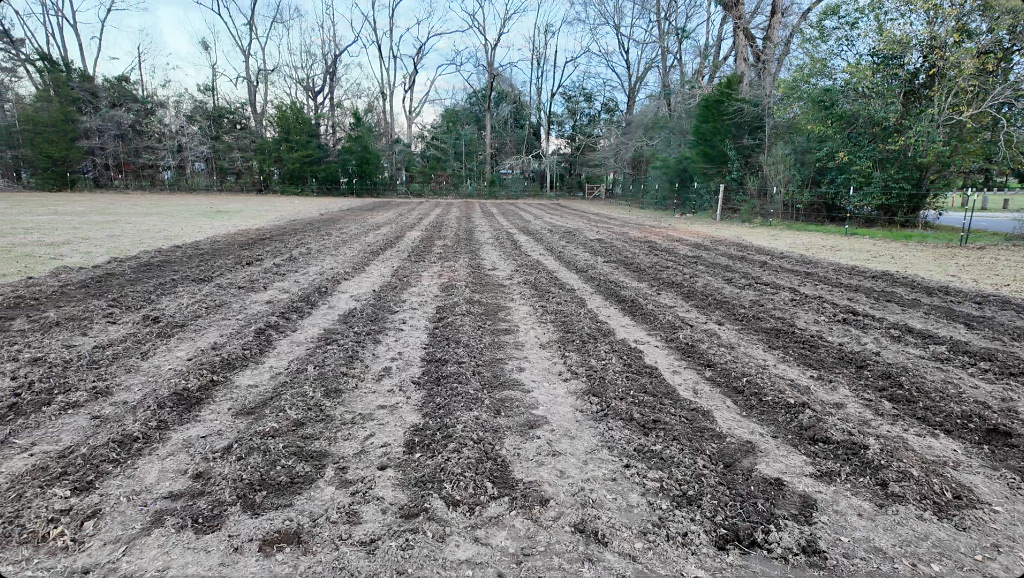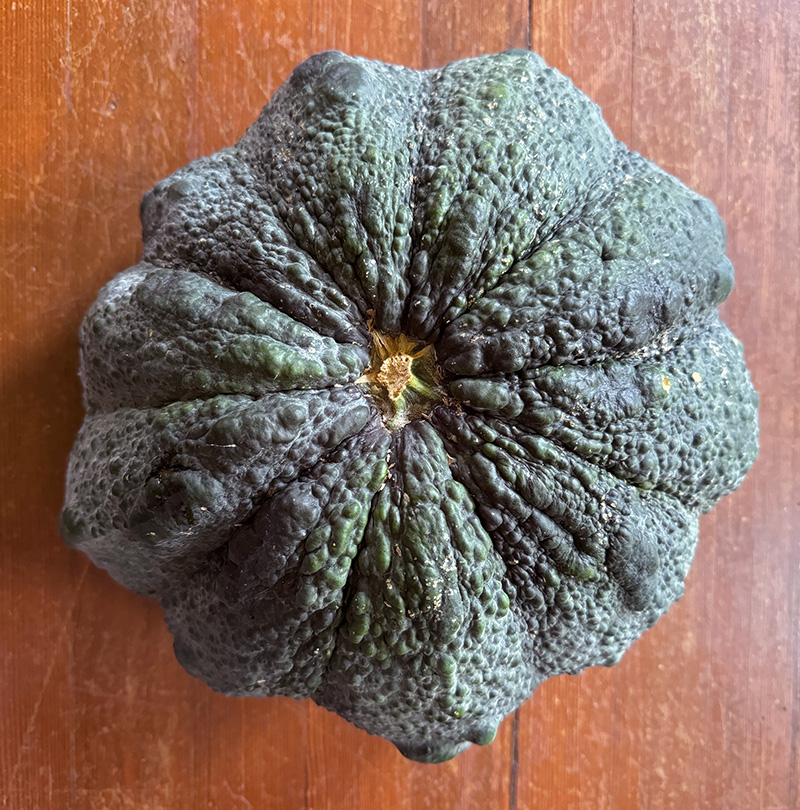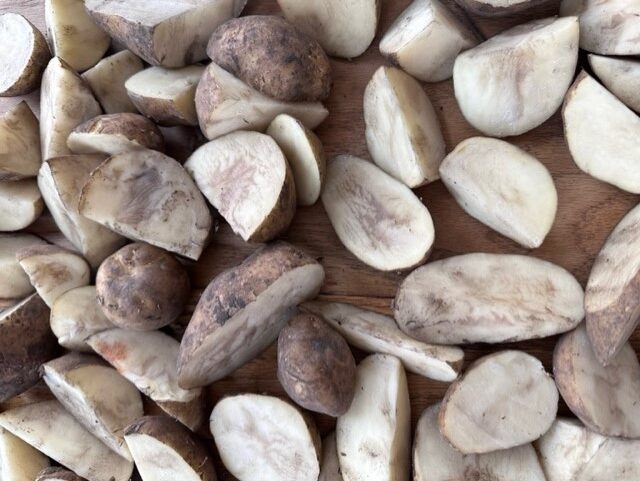This is our potato patch this year:

12 rows, each 150′ long. We planted Kennebec, Yukon Gold, Red La Soda and Adirondack Blues. A total of 198lbs of weed potatoes were planted.
This is the first time we used our tiller. It’s a Cherokee MRT-063 model, 6′ wide, on the back of the Kubota L2401 tractor. What a difference it makes to be able to till so much area!
We still had to dig all the potato trenches with hand tools, since I don’t have a potato plow/middle buster yet. That was time-consuming, but my friend Leo came over and helped, plus we had lots of child labor.
A week ago we fenced off an acre of the front cow pasture to use for larger row gardens, and that’s where this is located. I like long rows a lot, and love to weed with a wheel hoe, so this is where we’re doing that. Later, we hope to add a big patch of landrace corn, plus Ezekiel’s landrace watermelons. And maybe a patch of Grenada Black Pumpkins.

Using the tractor has been a blast. We borrowed a woodchipper a few weeks ago and made great big piles of mulch with it. It can chip branches up to about 6″ and made short work of our mimosa and popcorn tree branches.
Rachel and the kids have suspended homeschooling for a few weeks so we can get our spring crops in. Everything needs to be done at once right now: weeding, making up Steve’s Mix fertilizer, tilling, pruning, mulching, planting, starting seeds in the greenhouse… lots to do, and we’re really attacking it well! It’s wonderful to have the whole family working together for a time.
We haven’t had great luck with potatoes in the past, but try, try again. I limed this area in the fall, and will be feeding these with 17-17-17 once they come up. I gave up on nice organic methods this year and am just doing what the guys at the local feed store told me to do. I tried feeding them with cottonseed meal last year and they did poorly. Maybe this will do the trick. If I had more Steve’s Mix, I would use that, but it might get too expensive. I dunno, maybe I’ll throw a little out there for the micronutrients.
Wish us luck!
I’ll post a planting video shortly.

